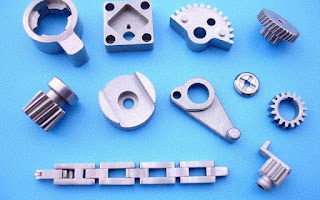Plastic Injection Molding Materials Allows High-Volume Production Of Parts Made From Thermoplastic Polymers
 |
Injection Molding Materials Market |
Numerous plastic varieties are employed as Injection Moulding Materials. End-use characteristics like tensile strength and impact resistance are imparted by various plastic resins. Additionally, there are certain processing requirements for injection moulded plastics, such as melt temperature and moulding pressure. Additionally, there are several grades of the same plastic substance, including resin varieties with additives like glass or fiberglass.
Fictiv works with manufacturing partners who employ
the appropriate Injection
Moulding Materials for the
project and can assist in choosing the best plastic material for the job at
hand. It can also assist in completing the task more quickly, whether it
includes medical plastic injection moulding, moulded plastic components for the
automobile sector, or something else entirely. The material characteristics,
comparisons to other resins, applications examples, grades, and brand names for
each of these materials are covered in the sections that entail.
Specialty plastics and polymer mixes are other
options that Fictiv can mold as well in addition to these Injection Moulding
Materials i.e. plastic. Strong, transparent thermoplastic known as acrylic
serves as a lightweight, break-resistant substitute for glass. Additionally,
this material has outstanding optical clarity, allowing a large amount of light
to travel through. Acrylic also resists the weather and ultraviolet (UV) rays. PMMA
is another moniker for acrylic, or its full chemical name is poly (methyl
methacrylate). Acrylic can tolerate
exposure to water, unlike certain polymers. Also capable of holding precise tolerances
is this injection-molded material. PMMA is not solvent resistant and won't
absorb odors.
Grease and oils may also mark it as Injection Moulding Materials readily.
Despite having high tensile strength, acrylic is vulnerable to stress
cracking when subjected to strong loads. Windows, greenhouses, solar panels,
shower enclosures, and other transparent architectural, lighting, and outdoor
components are a few examples of acrylic usage. There are both
general-purpose and specialist grades of PMMA polymers available, depending on
the situation. In common goods, general-purpose acrylic is
utilized.



Comments
Post a Comment